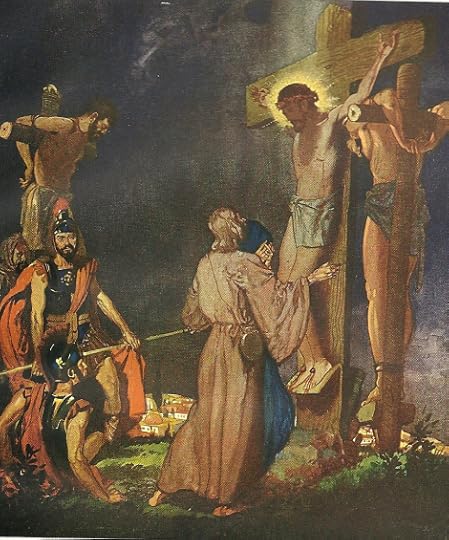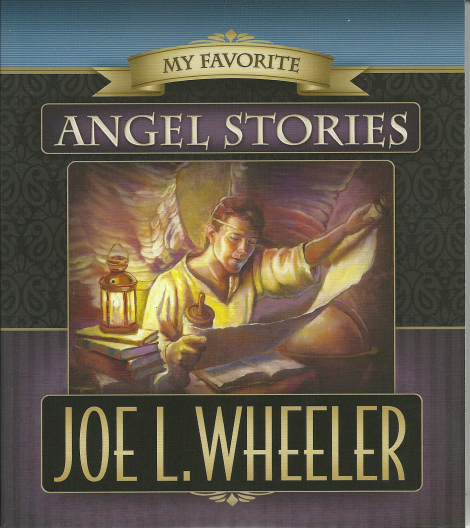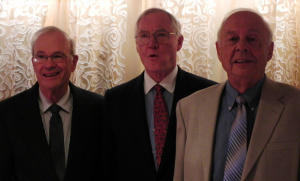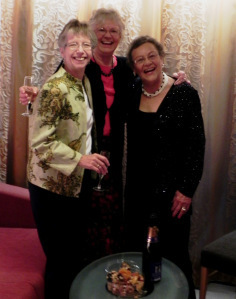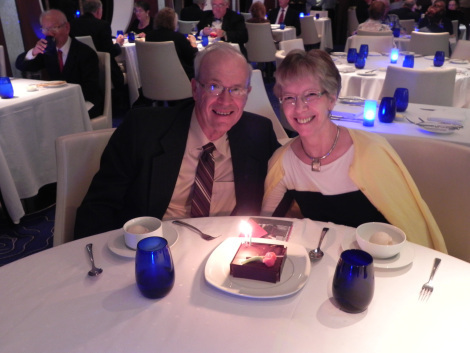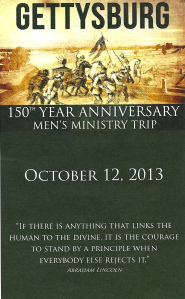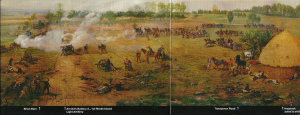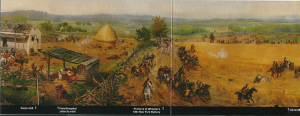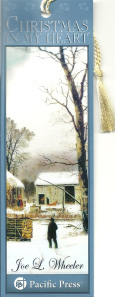Joe L. Wheeler's Blog, page 11
December 11, 2013
Why Are We Americans Becoming So Dumb?
BLOG #50, SERIES 4
WEDNESDAYS WITH DR. JOE
WHY ARE WE AMERICANS BECOMING SO DUMB?
December 11, 2013
It was while listening to the “Sunday Morning” broadcast that I was jolted into shock by a broadcast segment. In it, the program regular admitted how traumatized he was to discover that his increased use of electronic gadgetry such as Smartphones and aps was destroying his brain. The catalyst was his rueful discovery that he couldn’t even remember his wife’s phone number without retrieving it from an electronic index. Even more horrifying: to realize he could no longer remember how to spell common words such as “spatula,” no matter how much time he took to probe his mental memory banks. The same was true with mathematics: the electronic crutch ends up crippling the ability to do even simple math. Witness the number of individuals at restaurant and store checkout stands who are incapable of making correct change unless the machinery does it for them!
Every time I look at new lists of intelligence rankings (by nation), I wince as the U.S. continues to slip ever further down. Long gone are the days when we led the world.
In November and December of every year, I spend a large percentage of my time at book-signing tables; often with fellow Kiwanians at my side (because of our literacy program for area elementary schools), where for eleven years now, we’ve targeted third-graders. Reason being: studies reveal that unless a child falls in love with reading by the third grade, it’s not likely to ever happen at all. We are often permitted to set up our tables in large supermarkets because of this program. So we have plenty of time to watch people, young and old, as they come into, and leave, these chain stores. More and more often we are noticing a disturbing new phenomenon: children who are connected to electronic gadgetry tend to pay no attention to the books on our tables—or anything else, for that matter. But even when electronic gadgetry is not a variable, we’ve noticed that it has almost become a norm: when an approaching child’s eyes light up at the sight of books, almost invariably it turns out that the child is a homeschooler.
Even as I was watching this most recent “Sunday Morning” broadcast, and simultaneously signing complete sets of Christmas in My Heart books, I belatedly realized that the books were taking twice as long as normal to inscribe, and that my memory was fogging over and my accuracy continuing to deteriorate. Finally, I had to leave the room where the TV set was on so that I could complete my signings in the time I allocated for them.
All this causes me to question many of the so-called benefits of technology: if electronic gadgetry continues to erode our abilities to read, comprehend, articulate, write, understand, and effectively utilize abstract thought, then might we as a nation be paying way too high a price for so-called progress? Might it also turn out to be that it is not progress at all? But rather, the reverse?
In the thirty years of research poured into my 1993 book, Remote Controlled, I discovered that the more time an individual (of any age) spent watching TV, the dumber that person proved to be. And the more muddled the brains of the recipients. By extension, might it not also be true that overexposure to electronic imagery other than television will end up dumbing down the receiver’s brains even further? Reason being that those who receive pre-fab (created by someone other than the receiver) imagery rather than creating connotatively imagery through reading, being read to, radio or live drama, end up incapable of communicating effectively either in oral or in written forms. Only the reader, it turns out, is capable of writing coherent sentences and paragraphs. Non-readers, having little that is original to them in their brains to draw from, find it almost impossible to write anything creative or coherent at all!


December 4, 2013
Henry Van Dyke’s “The Other Wise Man”
BLOG #49, SERIES 4
WEDNESDAYS WITH DR. JOE
DR. JOE’S BOOK OF THE MONTH CLUB #25
HENRY VAN DYKE’S THE OTHER WISE MAN
December 4, 2013
It is December once again – time for another Christmas selection. For some time now I have been convicted that, for the third Christmas in our series, I ought to choose Henry Van Dyke’s greatest book. Of all Christmas books ever written, only Dickens’ Christmas Carol is the equal to The Other Wise Man. But it has something Dickens’ great book lacks: an unforgettable spiritual dimension that moves the reader deeply. It is one well worth re-reading every Christmas of one’s life.
One can count on the fingers of one hand the great Christmas stories. The Other Wise Man is one of them.
It was born on the eve of the social-gospel movement in America; born of the realization that the Jesus of the Gospels did not spend much time talking about what we call “doctrines,” but He was very concerned with how we treat one another. His entire earthly ministry could be summed up in two words: “loving service.”
Stories that change the world–how do they come to be? Half a century earlier, Charles Dickens had created the genre of Christmas story with his timeless A Christmas Carol. Nothing of comparable power had been written since.
For the 40-year-old scholar-cleric Henry Van Dyke, 1892 had been a dark and tragic year, during which his beloved father had died. The world saw merely the facade: Van Dyke at his peak–a graduate of Princeton, Princeton Theological School, and the University of Berlin; pastor of the New York’s prestigious Brick Presbyterian Church; author of such scholarly work as The Poetry of Tennyson. Yet inside, he was anything but confident.
The year had been full of sickness and sorrow. Every day brought trouble. Every night was tormented with pain. They are very long–those nights when one lies awake, and hears the laboring heart pumping wearily at its task, and watches for the morning, not knowing whether it will ever dawn . . .
And the heaviest burden?
You must face the thought that your work in the world may be almost ended, but you know that it is not nearly finished. You have not solved the problems that perplexed you. You have not reached the goal that you aimed at. You have not accomplished the great task that you set for yourself. You are still on the way; and perhaps your journey must end now–nowhere–in the dark.
Well, it was in one of these long, lonely nights that this story came to me. I have studied and loved the curious tales of the Three Wise Men of the East as they are told in the GOLDEN LEGEND of Jacobus de Voragine and other medieval books. But of the Fourth Wise Man I had never heard until that night. Then I saw him distinctly, moving through the shadows in a little circle of light. His countenance was so clear as the memory of my father’s face as I saw it for the last time a few months before. The narrative of his journeyings and trials and disappointments ran without a break. Even certain sentences came to me complete and unforgettable, clear-cut like a cameo. All that I had to do was to follow Artaban, step by step, as the tale went on, from the beginning to the end of his pilgrimage.
Responding to the oft-asked question: why he made the Fourth Wise Man tell a lie, to save the life of a little child, he countered,
Is a lie ever justifiable? Perhaps not. But may it not sometimes seem inevitable? And if it were a sin, might a man not confess it, and be pardoned for it more easily than for the greater sin of spiritual selfishness, or indifference, or the betrayal of innocent blood? That is what I saw Artaban do. That is what I heard him say. All through his life he was trying to do the best that he could. It was not perfect. But there are some kinds of failure that are better than success.
It is probable that more research went into this than any other Christmas story ever written. All his previous research, it appears in retrospect, had been setting the stage for this work. And now, it was not enough merely to tell the story he felt a Higher Power wished him to chronicle: it must have historical authenticity as well. So he scoured the great libraries of the world seeking information about every aspect of ancient life and travel. Not until he was satisfied that he knew his ground as well as an attorney presenting his first case before the Supreme Court did he finally begin writing.
What Van Dyke created was a story so simply and beautifully told that the reader is unaware that this re-creation of the world our Lord knew is undergirded by prodigious research. It is an awesome tour de force.
On Christmas Day, 1892, he spread out his manuscript on his pulpit, looked out at the vast hushed and expectant audience, and wondered how the Fourth Wise Man’s story would be received. He needn’t have worried: the little story spread like wildfire. Three years later, Harpers, the most prestigious publishing house in the world, launched it out across all the seas of the world, both in English and in many translations.
* * *
There are many editions out there on the world-wide web, but I recommend that you seek out one of the splendid editions with color art work. One of the most beautiful is the Harper Brothers 25th anniversary Memorial Edition of 1920, as well as the 30th in 1925. Believe me, you will treasure it forever. Try to secure a dust-jacketed edition.


November 27, 2013
NEWS RELEASE – MY FAVORITE ANGEL STORIES – NEW BOOK
BLOG #48, SERIES 4
WEDNESDAYS WITH DR. JOE
MY FAVORITE ANGEL STORIES
November 27, 2013
NEWS RELEASE
Joe L. Wheeler, Ph.D., is author of a new book, My Favorite Angel Stories (Pacific Press Publishing Association, November 13, 2013). This is Wheeler’s 83rd book (and 68th anthology).
Only once before has Wheeler compiled a collection of angel stories. It was Stories of Angels Seen and Unseen (Guideposts Books, 1997); the same pool of stories was restructured under the title The Wings of God (WaterBrook/Random House, 2000). Thus sixteen years separate the two collections.
Wheeler’s Introduction: “Is There a Difference Between Biblical and New Age Angel Stories” ought to be most significant to Christian readers who are unaware that all biblical angels are portrayed as being masculine. Even Billy Graham has confirmed this in his angel-related research. You will note that Pacific Press editors commissioned artist Marcus Mashburn to paint for this cover an angel who is clearly masculine.
Also, Wheeler points out in his Introduction other fascinating differentiating factors between Biblical and New Age angel story portrayals.
The book features a fascinating and spiritually uplifting collection of angel stories new as well as old. They are taken from the archives of a number of Christian faiths, for God’s angels minister to all His children, wherever they may reside, or in whatever time-period they may live.
All the following are included:
INTRODUCTION
“Is There a Difference Between Biblical and New Age Angel Stories?” – Joseph Leininger Wheeler
SECTION ONE
“The Turning Point” – Kirby Palmer
“Firewood and Candles” – W. A. Spicer
“Angel in the Darkness” – Kari Surdahl
“The Master Controls the Switch” – Elna English Mays
“Guardian Angels” – Betty Jones
“Hanging On by the Fingers” – Joseph Leininger Wheeler
SECTION TWO
‘Through the Storm” – Mildred Wilson
“An Angel Walked” – Lois M. Parker
“The Telegram That Saved My Train” – Author Unknown
“When Angels Rode Horseback” – Barbara Westphal
“John G. Paton and the Cannibals” – W. A. Spicer and John G. Paton
“The Touch of Angel Hands” – Frances Daisy Duffie and Martha Duffie
“Prayer and the Terror by Night” – Lieutenant Frank Lee
SECTION THREE
“He Shall Give His Angels Charge Over You” – Lois Wheeler Berry
“The Hand on the Wheel” – Deloris Bigler
“Run!” – Josiah Litch
“A Thousand Miles of Miracle” – A. E. Glover and W. A. Spicer
“The Power of Song” – Nina Case
“The Angels of Chortiza” – Gwendolen Lampshire Hayden
SECTION FOUR
“The Calling Card” – Dixil L. Rodriguez
“Underneath” – Martin Pascoe
“A Monarch’s Restless Night” – W. A. Spicer
“Whiteout!” – Teresa Sales
“Providence in Revolution” – Ellsworth Schneider
“Omnipresence” – Robert T. Jack
“We Should Have Been Dead” – Marla Palmer Marsh
SECTION FIVE
“The Sea on My Back” – George Plume
“Faith” – Mildred Hatch
“Stop the Ship!” – W. S. Chapman
“God Will Take Care of You” – J. Echo Cossentine
“The Mysterious Rider on PG-16″ – Merton Henry Jr.
“Maximillian’s Wish” – Author Unknown
“Let’s Run Tell Our Friends!” – Marla Palmer Marsh
* * * * *
Release date: November 13, 2013
Binding: Trade Paper
Cover Painting Artist: – Marcus Mashburn
Pages: 192
Price: $15.99
Packaging and mailing: $4.75
Personally signed or inscribed at no extra cost, if requested
SAGE AND HOLLY DISTRIBUTORS
P.O. Box 1246
Conifer, Colorado 80433
WEB Page: http://www.joewheelerbooks.com
Email: [email protected]


November 20, 2013
Thanksgiving – Just Another Shopping Day?
BLOG #47, SERIES 4
WEDNESDAYS WITH DR. JOE
THANKSGIVING – JUST ANOTHER SHOPPING DAY?
November 20, 2013
I can’t remember much sadder society developments than the recent greed-based decisions of large store chain executives–such as Macy’s–, to open their doors on Thanksgiving this year. In the process, depriving their own employees of the opportunity to celebrate the sacred holiday of Thanksgiving with their families. ‘To say nothing of their blatant attempt to shatter the heretofore sacred family day for millions of other Americans.
If anything can evidence clearer than this, a nation that has lost its spiritual moorings, I can’t think of it. I can imagine what Abraham Lincoln would say–who helped to found it during the darkest days of the Civil War. Thanksgiving was then a call to the nation to make that occasion a national day of prayer.
I’ve been waiting to hear from the nation’s spiritual leaders, as well as every minister in every parish. Where is the outcry from government leaders, from the President on down? About the only thing purveyors of greed will listen to would be a national boycott because of the outrage they are perpetrating.
Nor have I heard from the other great retailers. Where is their voice in all this? It’s like when one giant airline announces a fair-hike; if the others do not follow suit, there is an ignominious retreat from the fare hike. Why is this not happening?
How about you and me? Where is our voice in all this? This year, it’s not Black Friday – it is the Blackest of Thursdays!
I’m listening.


November 13, 2013
Golden Wedding Anniversaries — The End of an Era?
BLOG #46, SERIES 4
WEDNESDAYS WITH DR. JOE
GOLDEN WEDDING ANNIVERSARIES
THE END OF AN ERA?
November 13, 2013
It happened on board Celebrity Cruise Line’s ship Summit, as it was serenely sailing down that great Canadian seaway, the Gulf of St. Lawrence. It was September 28, a very special day in the lives of two cherished friends of ours, Ed and Jo Riffle of Glasgow, Kentucky. Bob and Lucy Earp of Murphreesboro, Tennessee and Connie and I were there to complete our traveling six-pack.
We had ordered a small cake in order to celebrate the fact that half-a-century before, on September 28, 1963, a young bride and groom were married. Back then, that was what we all did. As Doris Day would sing it, “Love and marriage go together like a horse and carriage–you can’t have one without the other.”
Not so today. Marriage is no longer the norm in America. About half of all couples merely cohabit a dwelling-place, living together without any commitment to be there for each other for the rest of their lives. As one of my aunts put it, “It’s like an automobile is parked in the driveway with the engine running–first bump, and “I’m out of here!” Once there were two, and now there is only one. Welcome to our age’s throw-away society. Everything is transitory: nothing lasts–not even relationships.
But you just don’t realize the long-term effects. Not until you sing “Happy Anniversary” to a couple who have been married to each other for fifty years. After we had done so, and the ship’s Blu Room had erupted in applause, our maitre ‘d, an effervescent young Lothario of about forty, came over to congratulate Ed and Jo. But it was what he said next that gave birth to this blog. There was a regretful poignancy in his voice as he said, “I’m not married – so there will never be a golden wedding anniversary in my life.
A society with fewer and fewer couples who have shared the ups and downs of life with each other for half a century is bound to be very different from the one that was born in what we call “The Normal Rockwell Era,” graced by picket fences and marriages and children born to couples committed to being there for each other, and for the children who would grow up safe and secure in a home where their parents continued to love and cherish each other. And when the children grew up, married, and had children of their own, there would always be a “home” to go home to.”
Today, more often than not in America, there is no longer such a place.
And that is a national tragedy.
Great civilizations do not collapse because of armies and destructive weapons. They collapse from within.
Just like ours. Are Golden Anniversaries a vanishing species today?


November 6, 2013
Eric Knight’s “Lassie Come Home”
BLOG #45, SERIES 4
WEDNESDAYS WITH DR. JOE
DR. JOE’S BOOK OF THE MONTH CLUB #24
ERIC KNIGHT’S LASSIE COME HOME
November 6, 2013
After the two-month marathon September Book of the Month, Victor Hugo’s monumental Les Miserables, I decided I ought to throw in a real change of pace. As I searched for a book generations of young people (as well as adults of all ages) have loved, I chanced to look at the most beloved shelf of books in my entire library: the books I cherished most during my growing-up years. Front and center was Lassie Come Home. Memories flooded in on me as I retrieved it, looked at my teen-age writing inside the cover, and remembered the impact of that first reading. My missionary parents [in Latin America] had given me a great gift: the gift of living with my maternal grandparents, Herbert and Josephine Leininger in their large rambling home in then almost perpetually foggy Arcata in California’s redwood country. I got to live there for my entire eighth-grade year.
Given that I was named after their only son (of seven children), who drowned in a swimming accident when he was only ten, they – especially Grandpa, who declared, when the body of his only son was brought into their house, “The light of my life has gone out!” – I was given a double dose of grandparenting love that year. And almost every week, I’d be taken to a local book store with enough money to buy another book just for me. One of those books was Eric Knight’s timeless dog classic. I could not put it down, reading on to its conclusion sometime in the middle of the night.
But now, I wondered, after over half a century, would the book still have the same power it did back then? Not to worry: it was near midnight before I reached that last page.
THE BOOK, THE MOVIES, THE SEVERAL TV SERIES
I would guess that even though millions have read the book, many times that number will have seen the Lassie movies and been addicted to one of the longest-running series in television history.
First of all, the author was himself a larger-than-life-figure: Eric Oswald Mowbray Knight (1897 – 1943) was born in Menston in Yorkshire [James Herriot country], England. His parents were both Quakers. His father, a rich diamond merchant was killed in the South African Boer War when Eric was only two. His mother then moved to St. Petersburg, Russia, to work as a governess of the Russian imperial family. She later settled in America.
Knight had a varied career, including service in the Canadian Army during World War I, and along the way studied art, became a newspaper writer, and later on, a Hollywood screenwriter. His first novel, Song on Your Bugles (1936) depicted the working class of Northern England. His This Above All is considered to be one of the most significant novels of World War II.
But it was his 1940 novel, Lassie Come Home, that catapulted him into worldwide iconic fame. Knight and his second wife, Jere, raised collies on their farm in Pleasant Valley, Bucks County, Pennsylvania, from 1939 to 1943. Though Knight then lived in America, the setting for the novel was back in the Yorkshire of his childhood, hence the Yorkshire dialect in the book. Knight met an untimely death in a plane crash in Dutch Guiana (Suriname) in 1943 –he was only 46.
The MGM movie, Lassie Come Home (1943), was directed by Fred M. Wilcox and produced by Samuel Marx. It had a powerful cast: Roddy McDowell, Elizabeth Taylor, Donald Crisp, Elsa Lancaster, May Whitty, and Edmund Gwenn. Pal starred as Lassie.
Half a century later, in 1994, Daniel Petrie and Lorne Michaels directed and produced Broadway Paramount’s Lassie. Unlike the earlier film, this one is set in Virginia’s Shenandoah Valley in a modern setting. Actors included Thomas Guiry, Helen Slater, Jon Tenney, Brittany Boyd, Frederic Forrest, and Richard Farnsworth.
In television, CBS’s Lassie ran an astounding 21 years; the main series from 1954 to 1974. During those years, its stars included Tommy Rettig, Jan Clayton, George Cleveland, Donald Keeler, Paul Maxey, Jon Provost, Arthur Space, Cloris Leachman, Jon Shepodd, George Chandler, June Lockhart, Hugh Reilly, Todd Ferrell, Andy Clyde, Robert Bray, Jed Allen, Jack De Mave, Ron Hayes, Skip Burton, Joshua Albee, Larry Wilcox, Larry Pennel, Pamelyn Ferdin, and Sherry Blucher. The real heroes, of course, were the collies that starred as Lassie. By the time the series reached its final conclusion, the dog had edged out almost all humans. The setting was in America rather than England, and the immortalized epic thousand-mile journey of Lassie in the book, Lassie Come Home, was not depicted at all.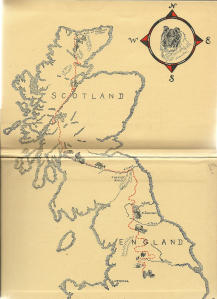
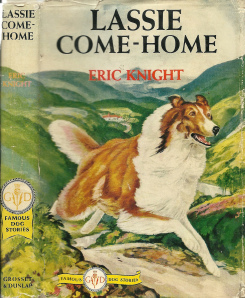
There was a later TV series, The New Lassie (1989 – 1991) that was memorable though low budget, starring Will Nipper, Christopher Stone, Dee Wallace Stone, Wendy Cox, and Jon Provost.
* * * * *
Though the book has appeared in a number of editions, it was originally published by the John C. Winston Company. Grosset and Dunlap thereafter took it into the mass market. Whatever you do, make sure the book you purchase is unabridged. The original runs 248 pages. The Grosset & Dunlap runs 186 pages, with smaller print. Avoid at all costs the many popular abridged versions.
Will be most interested in your reactions.


October 30, 2013
Calvary Chapel – Memories I made There – Part 3
BLOG #44, SERIES 4
WEDNESDAYS WITH DR. JOE
CALVARY CHAPEL OF PHILADELPHIA
MEMORIES I MADE THERE
Part Three
October 30, 2013
Gettysburg Weekend
Program Cover
My mind is still in a whirl after that memorable weekend. I still don’t really know what I expected to see and experience there–I only know that I was deeply moved by my being there.
Late one evening, I had a long chat with Calvary Chapel’s chief shepherd, Pastor Joe Focht. I told him I’d been deeply impressed by what I’d seen, comparing it to what I’d learned about the Post-Apostolic churches during my researching the life and times of St. Nicholas. The early Christian Church had no doctrine or creed, instead living by the Didache, a document as old as the Gospels themselves, based on Christ’s answer to the question, “What do I have to do to be saved?” His answer, according to Matthew, was “to love the Lord thy God with all thy heart, thy soul, and thy mind–and thy neighbor as thyself.” I noticed that just as Jethro advised his son-in-law, Moses, to stop micro-managing and instead select wise Spirit-led leaders, here in this church are leaders coordinating Medical Fellowship, Special Events, Single Moms, Women’s Prayer, Home Fellowship Missions, Divorce Care, Marriage and Family, Pre-marital Ministry, Men’s Repair Ministry, Hospitality, Bereavement, Worship Bible Study, Outreach, Missions, Deaf and Hard of Hearing, Military Support, Russian Fellowship, Prison Ministries, Christian Alternatives to Addiction, Calvary Christian Academy, Over 50′s Ministry, Men’s Accountability, Men’s Breakfast, Hospital Visitation, Children’s Ministry, Bookstore Ministry, New Believers, Transformed College and Career, Radio Ministry, Volunteer Security, Funeral/Memorial Services, Special Needs, Sports, Puppets, Street Evangelism, Crosswalk Jr. High, Greeter and Usher Ministries, Law Enforcement Fellowship, Men’s Prayer, Combat Veterans Support Fellowship, etc.
As a result, instead of feeling I was in the midst of a church dominated by a single-personality, here it was very much like individualized ownership of the church. Each member I spoke with considered the church to be a home/safe haven, a well-organized beehive of activity and involvement. Everybody belongs. I’m not surprised that this one church has spawned twenty more Calvary Chapels in Pennsylvania. Pastor Joe told me his sermons follow the Bible clear through each year; and the following year, he does it again, continuing to study deeply as he prayerfully write new sermons each week. There appears to be no cult clustering around one
person at Calvary Chapel, but rather Pastor Joe prefers to be known as merely a fellow-seeker of spiritual knowledge and service for others. He and I discussed favorite authors and books, and before I left he gifted me with three of his favorite books by an author I’d never heard of before–I’m finding them extremely insightful; I’m planning on returning the favor. In short, with him I feel I shall enjoy many years of friendship with a kindred spirit.
It appears that Calvary Chapel pastors, rather than coming to their pulpits via divinity schools, tend to come from the rough and tumble world itself, just as was true of Christ’s apostles. It was certainly clear to me that Pastor Joe feels called.
As for Pastor Trevor Steenbakkers, my contact, guide, and chauffeur, he too I came to deeply appreciate. He is very good at what he does: shepherding the men of the church. Most certainly the women of the church are led by equally effective leadership.
I am so thankful they invited me to spend a weekend with them. I feel deeply blessed.


October 23, 2013
Calvary Chapel – Gettysburg – Part Two
BLOG #43, SERIES 3
WEDNESDAYS WITH DR. JOE
CALVARY CHAPEL OF PHILADELPHIA
GETTYSBURG
Part 2
October 23, 2013
Cyclorama Depiction
After days of heavy rain, the skies had finally cleared. At 7:35 a.m., I was picked up at the Radisson and ferried over to the block-long Calvary Chapel complex. Five apparently brand new 54-passenger tour buses were rapidly filling with growth-oriented men, men who knew each other well. Here and there were fathers and sons. Had to smile at the two sets of fathers and sons in the row just in front of me: it started out father/son, but it rapidly became clear that the boys preferred sitting together, so they were so accommodated. Thereafter both the two men and the two boys talked to each other non-stop.
Our bus, containing the leader, Pastor Trevor Steenbakkers, was designated Bus #1, and led the pack out of the parking lot and headed south. Initially, well over 400 had planned to go, but when our Government shut down, and the national parks, monuments, and battlefields closed, for a while it appeared the day at Gettysburg would be lost. However, Pastor Trevor was tenacious and the good people of Gettysburg (losing money at an alarming rate) were desperate enough to get creative. So here we were, heading to the most famous battlefield in America, wondering what we’d see.
After we cleared Philadelphia’s suburbs, our leader introduced a film few of us had ever seen: the four-hour-long documentary, Gettysburg; we’d see half of it going, and the other half returning. Since I’d been devouring a large book detailing the three-day battle for over a month, I found the historically accurate film riveting. What was almost surreal was watching the action in the screen above us and simultaneously experiencing/seeing outside the same hill and tree configurations depicted in the film. It was almost like theater in the round.
Immersed in the film as we were, we were jarred when the film was turned off: we were coming into Gettysburg. I’d been there before, but never before with a guide. We drew up at the Gettysburg Cyclorama complex, and within several minutes, our “soldier” guide came aboard. He told us that though we were not permitted to enter the 6,000 acre battlefield, we’d get mighty close. Though eight of the ten roads intersecting Gettysburg were federal, fortunately two were not. We’d thus be able to nibble at the battlefield from a number of angles, all of which our guide knew–in fact, he was descended from men who fought here. In short, he was living history! I have found that, in travel, a guide who is passionate about the subject literally makes a trip. And so it was here. Serendipitously, we got to experience in depth the town of Gettysburg, usually relegated to the sidelines by pilgrims who spend almost all their time on the battlefield itself. With such a guide, believe me, none of us felt shortchanged.
Cyclorama Depiction
Afterwards, it was back to the Cyclorama complex, with its food court, large gift/book store, and the dramatic Cyclorama. During the 1880′s, the French artist Paul Philippoteaux researched, and painted what is now the largest painting in America. It took him, with his team of assistants, over a year to create the 42-foot-high and 377 feet in circumference painting. Pickett’s Charge dominates. As you walk around you can check out each portion of the battlefield. A sound and light show dramatizes it.
While half the group experienced it, I had the opportunity to answer the other half’s questions about Abraham Lincoln, the Civil War, and Gettysburg. Then I took them deeper into the significance of Gettysburg, the pivotal high-tide of the Confederacy. I discussed with them Lincoln’s epiphany when he wrote what his secretary, John Hay, called “The Meditation of the Divine Will.” In it [Hay had found it on Lincoln’s desk and secretly copied it.], Lincoln rhetorically asked why God refused to bless the armies of the North: for two long years, Robert E. Lee and Stonewall Jackson had time after time defeated Union armies two or three times larger than they. Why? asked Lincoln. Didn’t the North have the high moral ground in God’s eyes? Finally [and I tell the fuller story in my Lincoln biography, Abraham Lincoln: A Man of Faith and Courage], Lincoln was convicted that God withheld His blessing from the North because it had refused to address the almost quarter of a millennium cancer of slavery. After much prayer, Lincoln made a vow to God that if Lee retreated from Antietam across the Potomac, he would issue the Emancipation Proclamation, freeing the slaves. Lincoln did so on January 1, 1863.
What further muddied the waters for Lincoln was his realization that both North and South prayed to the same God, asking each day for battlefield success. As if that didn’t muddy it enough, many of the slaves in the South were actually owned by absentee planters in the North. So the North came into the Civil War with anything but clean hands, where slavery was concerned.
Lee came to Gettysburg serenely confident that he would, once again, easily dispose of Union forces, led as they were by inept northern generals. After his victory, since Gettysburg was only a few miles from Washington, there would be little to prevent his victorious troops from marching on the capital. When it fell, the war would be over.
But if Lincoln was right, and his freeing the slaves six months before would be accepted by God as a clear indication that the North was at last seeking higher moral ground, then God ought to recognize that fact on the battlefield confrontations.
But, for Lee, though time after time it looked like he had the Federals on the run, now each time they miraculously regrouped. I pointed out to our Gettysburg armchair historians that:
1. Meade had only been in command of the Army of the Potomac for three days when Gettysburg cannonading began, yet he refused to buckle as had his predecessors. Nor did Hancock, his strong second in command.
2. First and foremost, Lee was missing the one indispensable person, other than himself, in the war: Stonewall Jackson, the commander the Feds feared most, for he out-thought and out-fought their generals every time. At Chancellorsville, when Jackson was killed by “friendly fire” from his own men, Lee declared he’d rather have lost his right arm. That loss contributed mightily to the results at Gettysburg.
3. Always before, the great cavalry commander, Jeb Stuart, could be counted on as Lee’s eyes and ears so that Lee would know everything about the enemy and its placements before the first shot was fired. This time, for some unexplainable reason, he was AWOL, rampaging through the Pennsylvania countryside, wreaking havoc–he wouldn’t show up until late on Day 2.
4. Without Stonewall Jackson, Lee’s second in command, Longstreet, was sulky, dragging his feet at Lee’s commands.
5. Pickett, too, was a no-show until late on Day 2.
6. And why did Lee, that military master who always knew when not to push it too far, now pushed it too far, overriding Longstreet’s strong reservations, and order Pickett’s ill-fated almost suicidal charge?
The result: Lee was forced to retreat. Had Meade and Hancock corralled the Confederate armies on the banks of the swollen Potomac River, all could have been over–but they did not, thus the war lasted two more bloody years.
Nevertheless, Gettysburg clearly represents the high tide of the Confederacy. Never again did Lee cross the Potomac. Every day thereafter, the North grew stronger and the South weaker.
It does appear that God took sides, albeit in a limited way, after Lincoln’s Emancipation Proclamation. In Lincoln’s Gettysburg Address, it is clear that Lincoln was convicted that God’s slowness in ending the bloodbath was because both North and South had near a quarter millennium’s worth of slave-related blood on their hands, thus both sides were denied an easy solution.
And Lincoln’s assassination would prolong the anguish (in the South) for yet ten more years of what was euphemistically called “Reconstruction.”
All through our time together, our reference sources were primarily my two Howard/Simon & Schuster books: Abraham Lincoln: A Man of Faith and Courage (2008); and Abraham Lincoln Civil War Stories [it includes four powerful Gettysburg stories] (2013).
All these things and more, we discussed at Gettysburg.
Afterwards, we boarded the bus and headed back to Philadelphia.
Next week, we will conclude this Calvary Chapel series.


October 16, 2013
CALVARY CHAPEL OF PHILADELPHIA – DAY ONE
BLOG #42, SERIES 4
WEDNESDAYS WITH DR. JOE
CALVARY CHAPEL OF PHILADELPHIA
DAY ONE
October 16, 2013
I just returned from a most memorable weekend in Philadelphia and Gettysburg. The appointment had been made a number of months ago, but until I actually arrived there I had only the haziest idea of what I might meet there. All I knew was that a certain Pastor Trevor loved my 2008 biography, Abraham Lincoln: A Man of Faith and Courage, and wanted to know if I’d be willing to speak to his church on the subject of Abraham Lincoln. By the time I got there, my newest book, Abraham Lincoln Civil War Stories had just arrived.
What a wonderful experience it turned out to be!
I would be dividing my time between the church’s men and their sons, and the church’s high school students.
Since I’ve never belonged to a congregation of more than 3,500 members, it was a radically new experience for me to be speaking to a church of 10,000 members, plus 5,000 teens and children. A church with a staff of forty; sixteen being full-time pastors.
I might as well confess that up until last weekend, I didn’t think much of large or mega churches. Mainly, I guess, because I’d never before experienced one first-hand. With that many people, I really didn’t see how the average member could have his/her needs met. I even wondered whether or not there might be more than a little of Elmer Gantry-ism in their leadership teams.
But rather than ramble on in generalities, let me tell you what it was like being there. I’d be spending my first morning with about 500 of their teens attending Calvary Christian Academy. I spent considerable time at home writing what I hoped would be an interesting lecture, but, as I continued to pray about the weekend, gradually I was convicted that I ought to ask Pastor Trevor if he’d be willing to get the young people to write out questions that intrigued or interested them (on subjects such as Lincoln, writing, authors, reading, life, etc.—whatever might be on their hearts). He relayed that message to the teachers. And so it was, after a three-hour rain delay, I arrived late; but there was this imposing stack of questions—and I’d be speaking to them the next morning. I finished at 1 a.m. Believe me, they’d taken me at my word: Here are just a few of their questions:
PUBLIC SPEAKING
• How do you handle talking to large groups?
• Were you always good at speaking to large groups? If not, how did you overcome that fear?
READING/WRITING
• Do you have to know how to use direct objects and predicate nominatives to be a writer?
• Do you have to be a good reader and like to read to be a good writer?
• How does journaling help you become a better writer?
• As a journaler, do people write about their lives or what went on in the world?
• Does traveling to historic places give you inspiration?
QUESTIONS DIRECTED AT ME
• How do you become an author?
• What is your favorite color?
• How did you come to know God?
• What is it like knowing people are reading books you wrote?
• How do you know what God’s plan is for your life?
• What is your favorite ice cream flavor?
• Why did you decide to write biographies about people?
• Do you ever run out of ideas to make your books better than your previous books?
• How do you create great books that are interesting to most age groups yet talk about God too?
• How does it feel to be known and famous?
• What do you do when you don’t know what to write about?
• As a professional writer to a young writer, what is the best way to improve one’s writing capability?
• Which of your works are you most proud of?
ABRAHAM LINCOLN
• How long did you study Abraham Lincoln for your book?
• What made Lincoln a great leader?
• What do you think was Lincoln’s greatest flaw?
• In your opinion, what was the single most difficult decision made during Lincoln’s presidency?
• Was Lincoln a Christian man?
• What was the hardest decision Lincoln had to make as president?
• When Lincoln was president, did he have people to discuss his decisions with, and did they agree or disagree?
• Was Lincoln personally interested in freeing slaves? Or was it just a political move?
• How did Lincoln feel about his widespread fame? How did he handle it and stay humble?
• Why in most photos does Lincoln wear a top hat?
• Did Lincoln struggle with the paparazzi?
• Elaborate on the dream Lincoln had just before he died.
• How do you think our nation would be different without Lincoln and his faith in God?
• The Gettysburg Address is one of the most famous speeches in history. Yet he went after another man. Could you tell us about him?
• What was the single event in Lincoln’s life that set the stage for what he became?
• Did Lincoln want to be president as a child?
* * * * *
As you can see, their questions were not only insightful, they reveal that their Calvary Christian Academy history teachers really teach their students history! Many college students today wouldn’t have been able to field questions as deep as many of these. Nor be as knowledgeable about history.
Not only that, but they were most attentive, alert, interested in the subject, and respectful. Afterwards, a number came up front to ask for my autograph—one wanted it on her wrist. 
THE FAITH OF LINCOLN
In the evening, I spoke to 400 – 500 fathers and sons about Lincoln’s faith in God–while young; when as an adult he put God on hold for many years, and then when his second son, Eddie, died, how he recognized his great need for God; and finally how, during the Civil War, only his moment by moment reliance on God made it possible for him to face the horrific casualties (620,000 – 750,000), more than all the rest of our wars put together). I also discussed the need for parents to return to the daily story hour so that they can minister to their children’s spiritual needs from day to day.
Afterwards, for several hours, I signed their Lincoln books (both the biography and the new story anthology).
Then I was ferried back to the motel. Next day was Gettysburg. Will fill you in on that next week—what it was like during the government shutdown!


October 9, 2013
CHRISTMAS IN MY HEART #22 IS HERE!
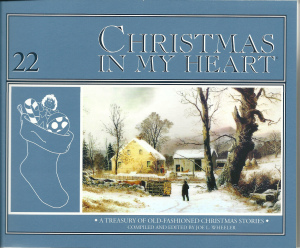 BLOG #41, SERIES 4
BLOG #41, SERIES 4
WEDNESDAYS WITH DR. JOE
CHRISTMAS IN MY HEART #22
October 9, 2013
NEWS RELEASE
Joe L. Wheeler, Ph.D. is pleased to announce the arrival of his 82nd book, Christmas in My Heart® #22 (Pacific Press Publishing Association, 2013). How mightily God has blessed this series! Amazingly, still alive and energetic 21 years after the dream was born with that unnumbered Christmas in My Heart® collection back in 1992, and now the longest-running Christmas story series in America.
Way back then, Joe and Connie Wheeler had not even an inkling that that white-colored book with a Currier & Ives illustration on its cover represented a life-changing force that would radically change the course of the rest of their lives.
Those simple common denominators: horizontal trade-paper cover with a Currier & Ives illustration, old-timey woodcut illustrations inside, and stories chosen for their spiritual values and their emotive power (think Kleenex®) would go on to become that rarity: an unchanging and dependable icon of Christmas, faithfully showing up on time for every new Christmas.
This year, the cover is printed in a gorgeous metallic blue, Currier & Ives-ish cover art created by George Henry Durrie and cover design by Steve Largo.
Two Christmases ago, Pacific Press celebrated the series’ 20th anniversary with a beautiful multi-colored bookmark, image taken from the book’s cover illustration. By itself, the bookmark spiked sales. A Barnes & Noble manager told Wheeler that his bookmark was more beautiful than most of those sold in their bookstores for five dollars each. And a tassel to boot!
Well, that bookmark made such a splash that the publisher was persuaded to create another for Christmas in My Heart® #21. By then, devotees of the series (many thousands now had all 21, calling themselves “Christmas in My Heart Completists”) now considered the newest books to be naked without the now obligatory tassel. So it came to be that for most of a month now, in the Boise, Idaho publishing headquarters and plant, almost everyone has been hand-tying tassels on the newest bookmark. Just imagine that: a twenty-first century publishing house caring enough about a mass-produced product to hand-craft a tasseled bookmark for each book!
If you already have one of those heirloom matched sets, of course you’ll buy the new collection right away, so you can savor the stories all the way through the 52 Days of Christmas (the interlocking three seasons: Nicholastide, Advent, and Christmastide, concluding on January 6), as well as re-read your favorite stories in the previous 21 collections.
On the other hand, nothing is sequential in the series; each book being a stand-alone story collection. Second, these stories are anything but same ol’ same ol’, for Wheeler made a vow to God that if ever a new collection should prove to be weaker than those before, then he would terminate the series right there! Note his statement on the back of this collection:
As I ever so slowly chose the stories that would grace this series, each day I prayed that God would choose the finalists, not me. As usual, it took many drafts [more than ten] before I felt confident that God had signed off on the collection.
It is once again my humble prayer that God will bless each person, each family, as they vicariously experience the stories in the newest collection.
–Joseph Leininger Wheeler
Just to give you a feel for this new collection, all the following stories are included:
Introduction: “A Child Looks at Christmas,” by Joseph Leininger Wheeler
“Our Little Lamb,” by Cath Delaney
“The Gifts of Joy,” by Pearl S. Buck
“The Season’s Greetings,” by Margaret Weymouth Jackson
“Christmas Emergency,” by Ann Howard
“Christmas on Dock Street,” by Seth Harmon
“Lesson in a Stable,” by Clarence S. Hill
“Think Big,” by Elizabeth F. Noon
“Happy Miracle,” by Charles G. Muller
“When Polly Ann Played Santa Claus,” by Eleanor H. Porter
“The Big Christmas Present,” by Eleanor Hoyt Brainerd
“Christmas Express,” by B. J. Chute
“Barby,” by Persis Gardiner
“The Man Who Had Nothing to Give,” by Marie Harmon
“Once Upon a Time,” by Christine McKerrell
“Yesterday, Today, and Tomorrow,” by Joseph Leininger Wheeler
A word about Wheeler’s Christmas stories. This one is the longest Christmas romance he has ever written–it had to be with a cast of 20 characters!~ His Christmas romances are cherished by so many that in 2014, Howard/Simon & Schuster is publishing a self-standing collection of his Christmas love stories. Another reason this one is so long is that it is really a novelette-length story about living; consequently, Wheeler incorporates into it all the key motivational poems and quotations he’s used for his students during his long teaching career. It also incorporates the settings frontier writer Zane Grey loved most. And lastly, Wheeler never writes a story unless God first joins forces with him. Note his explanation of what happened with this story (on p. 122):
“Without question, with twenty characters, this is by far the most complex story I have ever tackled. But even after I’d written twenty-five pages, the words remained flat on their backs; no vital signs whatsoever. In near desperation, I prayed day after day that God would come to my rescue so I could meet my book deadline. Then, at 4:00 a.m. on the morning of October 19, 2012, God gifted me with a dream in which all twenty characters miraculously sprang to life, a number with distinct personalities. I got up, ruefully looked at the twenty-five pages, and started all over again. But this time, I was dealing with three-dimensional characters who created their own plot–I had no idea as to where they’d end up or how. Only God knew.”
* * *
Price is $13.99, plus $5.00 packaging and shipping. For those interested in picking up the entire set at a great Christmas season discount, retail for the 22 books in the core series (published by Review and Herald 1-16, and Pacific Press 17-22) is $262.78. But you may purchase it from us during this Christmas season for only $160.00 (over $100 discount). Should you wish to insure story completion, by also purchasing the Focus on the Family/Tyndale House hardbacks #13 and #15 (includes three stories not in the core series), retail would be $299.77; sale price would be $175.00. U.S. shipping (includes packaging, insurance and UPS home delivery) would come to $35.00 for the complete set of 22 or 24 books.
Upon request, Wheeler personally signs or inscribes each book at no extra cost to the purchaser.
Write to me at P.O. Box 1246, Conifer, CO 80433.


Joe L. Wheeler's Blog
- Joe L. Wheeler's profile
- 36 followers



